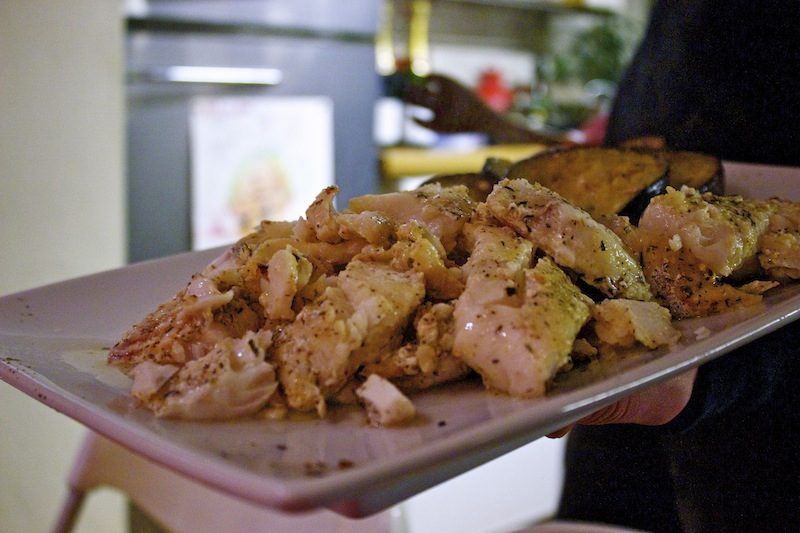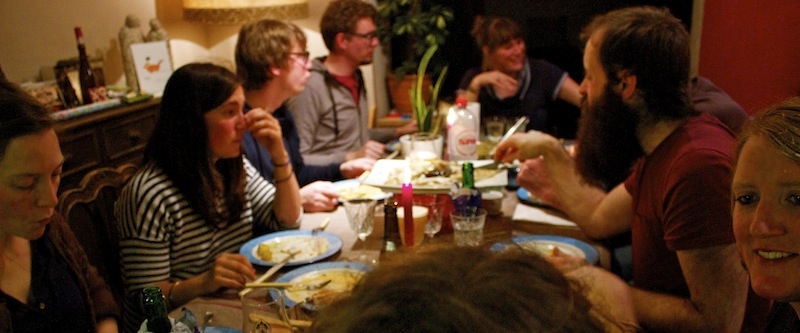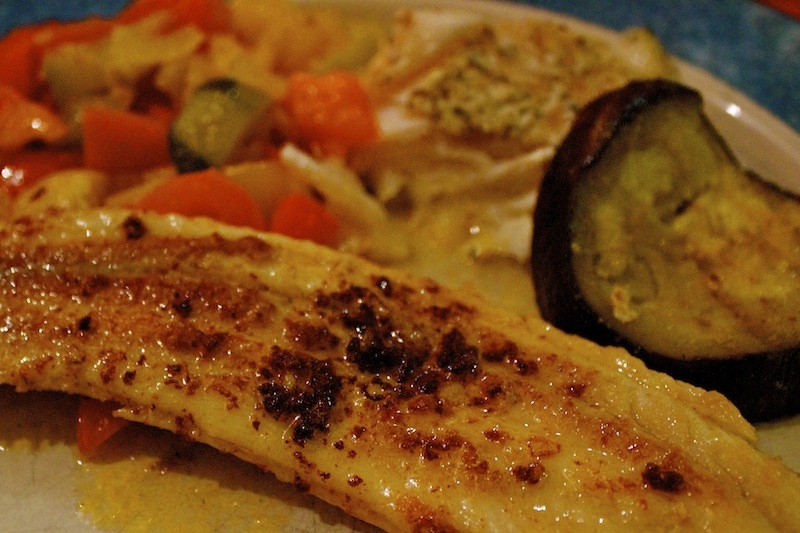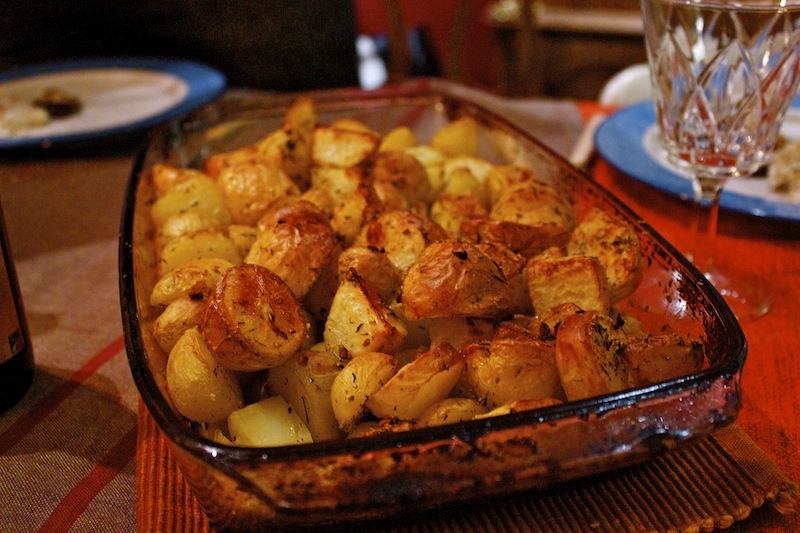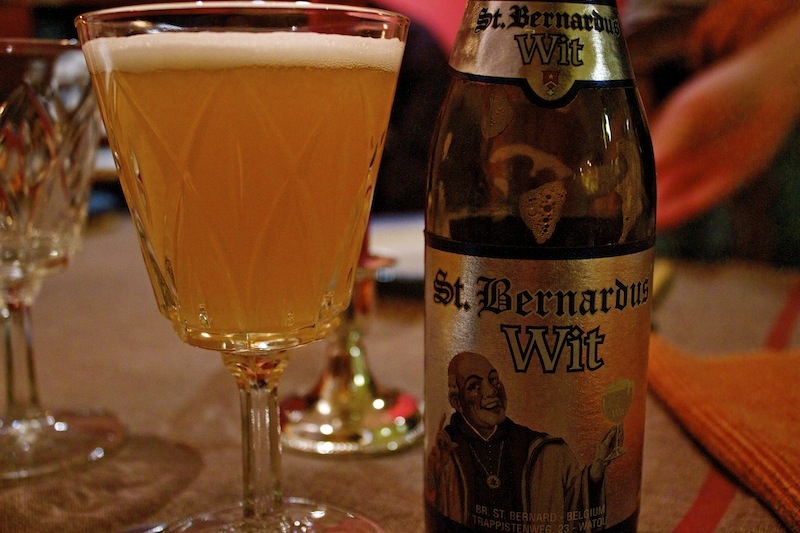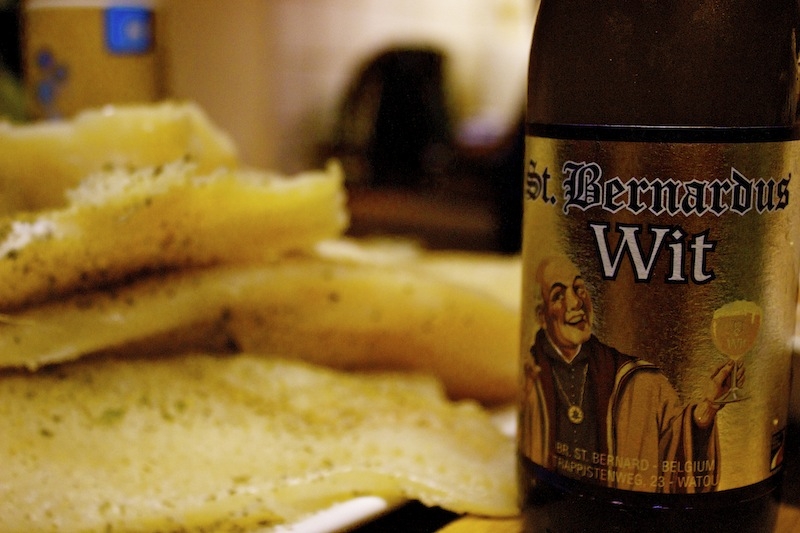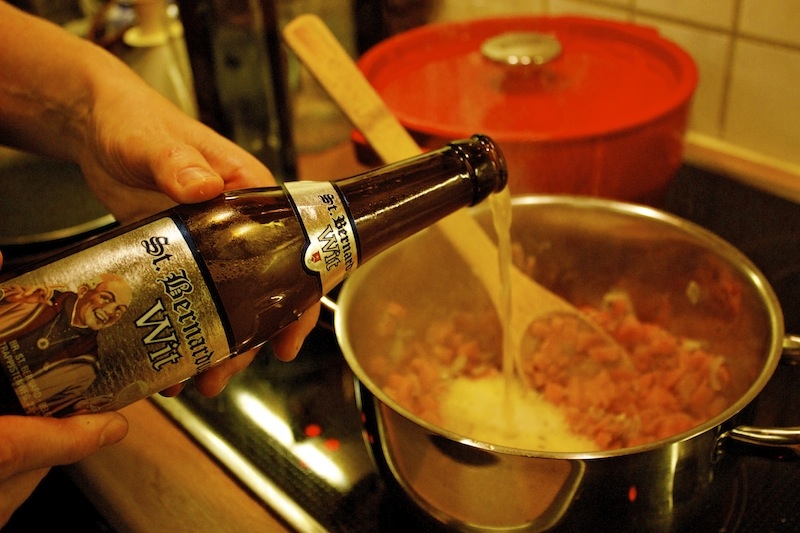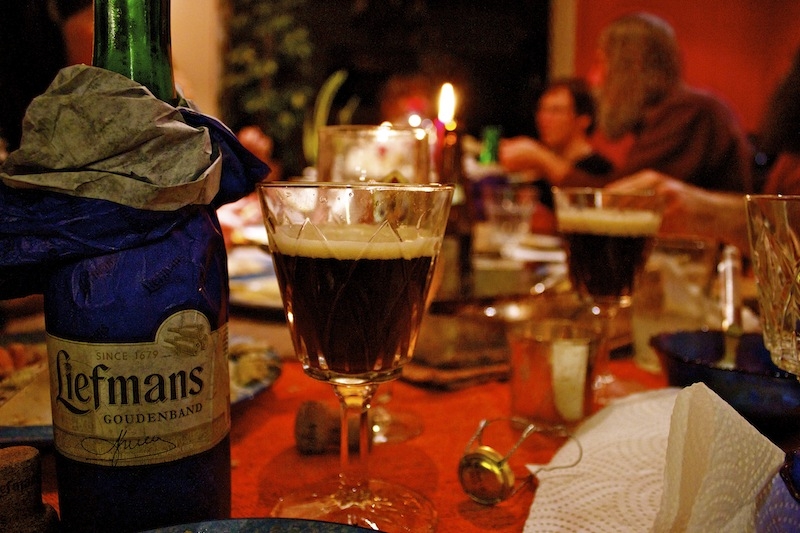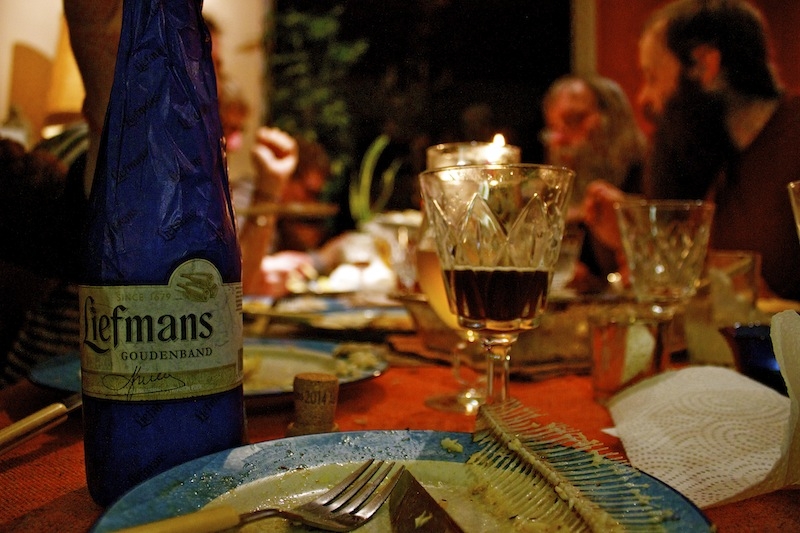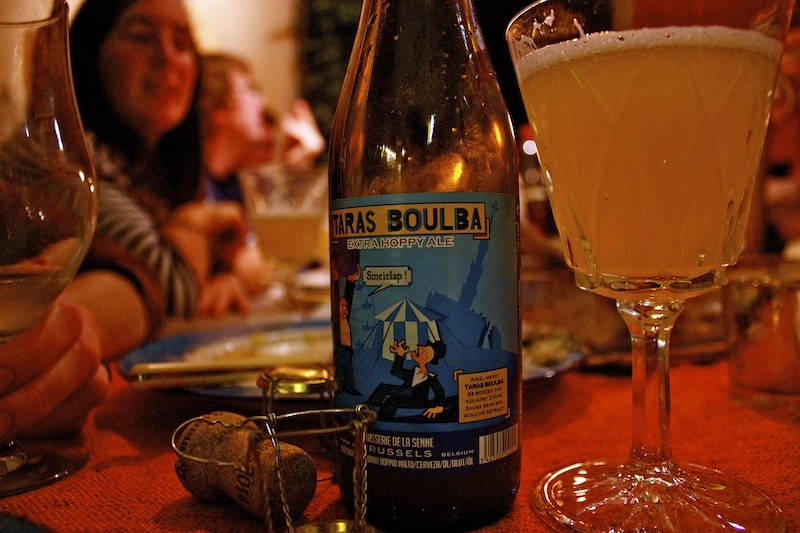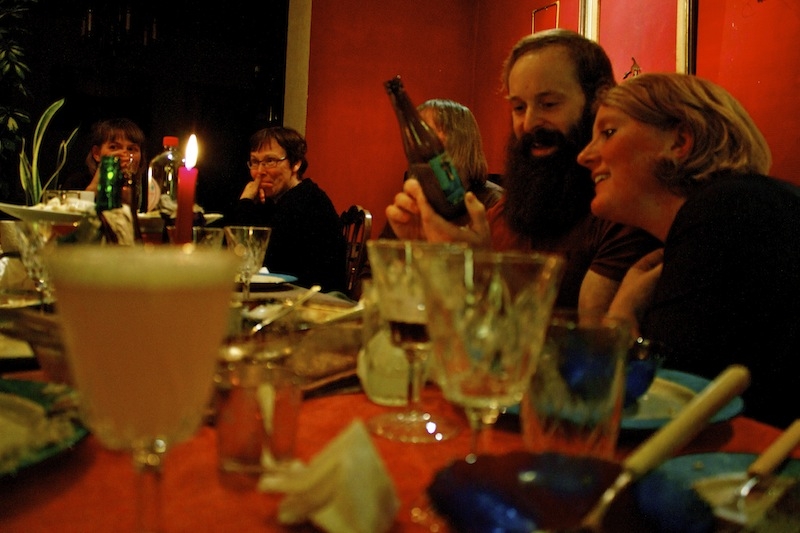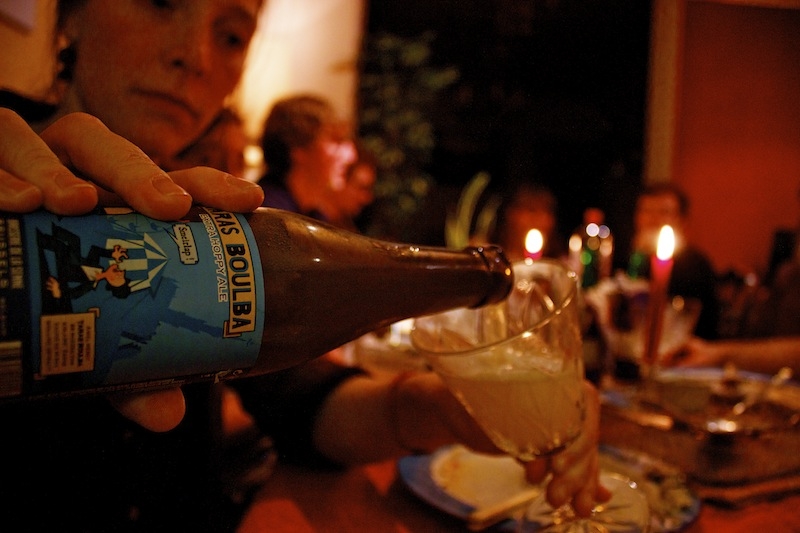The latest installment of our regular fish and beer evening took place last week when we grabbed another catch from the sea and trawled it across to Kortrijk.
It’s essentially an evening when a group of friends meet up to gut, clean, cook and eat fresh fish and of course, to drink some beer.
Elisa and I were the hosts of the last ‘visavond’ (which you can read about here) during which we paired Rodenbach Grand Cru, Hoegaarden Grand Cru, Seef beer and La Chouffe with fish. This time, the ‘visavond’ was hosted by Elisa’s brother, Lander, and we brought some different options.
Much has been said about the versatility of wine with fish, and particularly white wine. Beer of course offers just as many, if not more options than wine for pairing with fish. It’s becoming a sexy trend for restaurants and chefs in Belgium and further afield.
FISH AND BEER
We paired three different fish and beer: Cod, a flaky white fish; Turbot, a large delicate sandy-coloured flat fish; and Sole, a long slipper-shaped flat fish with coarse brown mottled skin and a creamy underside.
The three beers we selected were from three different styles, with the old-school brewing tradition of Sint Bernardus at Watou, the successful revival by Duvel Moortgat of the historic Liefmans brand and the vibrancy of the young Brussels brewers of Brasserie De La Senne.
BEER 1: SINT BERNARDUS WIT (5.5% A.B.V.) | SINT BERNARDUS BREWERY
The brewers at Sint Bernardus are most celebrated for their Tripel and their dark strong ale, Abt 12.
The brewery’s relationship with Sint Sixtus Abbey has captured the imaginations of beer lovers around the world, both in the context of the licence they were granted until 1992 by the monks to brew Westvleteren beers and their disputes over the controversial laughing monk labels.
But it seems that because of their range of world renown beers and the folklore that surrounds the brewery, their wit beer is often overlooked, and that’s a shame, because it’s one of the best wit beers in Belgium.
It’s a traditional Belgian ‘white’ or ‘wheat’ beer which pays homage to the style espoused by Pierre Celis and presents as a pale hazy straw-coloured ale with a dense ice-cream head. The wheat offers a tangy characteristic with a coriander spice kick and a fruitiness from bitter orange peel additions.
The beer shows tremendous versatility with fish dishes largely down to its light body and refreshing nature. Not only did we deploy it as an aperitif and as a pairing with the fish from the outset (where it worked especially well with the white and moist flakiness of the cod), but we also used it in the delicious sauce prepared for these dishes.
BEER 2: LIEFMANS GOUDENBAND (8% A.B.V.) | DUVEL MOORTGAT
There are some beers – good beers – that don’t warrant too much discussion. You drink the beer and you enjoy it. It’s a good beer. That’s pretty much all there is to say.
The Liefmans Goudenband (‘Gold Band’) is not one of those beers. It’s an incredibly complex beer.
It also enjoys a rich history, from its early beginnings as an everyman’s oud bruin from Oudenaarde in the 17th century when it was called ‘Ijzerenband’ (‘Iron Band’) – a reference to the iron bands around the barrels – to its current incarnation as one of Duvel Moortgat’s most successful brands after Riva (who owned Liefmans at the time) went bankrupt in 2007.
Perhaps the most influential person in the beer’s development was Rosa Merckx, the first female brewmaster in Belgium and a highly respected brewer at Liefmans for over 40 years who still assists with quality control at the brewery. Duvel honour her to this day by putting her signature on every one of the traditional hand wrapped tissue paper labels around the Liefmans bottles.
Liefmans Goudenband won the award of ‘Best Belgian Beer’ at this year’s Brussels Beer Challenge, Belgium’s premium beer competition and increasingly one of the most important beer competitions in the world.
It’s special not just because of its history, but also because of the way it is brewed. It’s a beer of mixed fermentation, so the wort is fermented both spontaneously by bacterial flora and by top-fermentation with pitched yeast. The brewing takes place in Duvel’s production plant in Puurs and the beer is then shipped to Oudenaarde to be conditioned in magical Liefmans tanks for anywhere between 4 months and a year. It’s also blended with fresh beer to spark a secondary fermentation in the bottle.
All this makes it an absolutely perfect accompaniment for the delicate flakiness of the fish, and particularly the more luxurious Turbot, the springy firm whiteness of which compliments the high apple, rhubarb and balsamic aromatics of the Goudenband. The beer opens up the palette, firstly with sweetness and then with sourness.
BEER 3: TARAS BOULBA (4.5% A.B.V.) | BRASSERIE DE LA SENNE
This was the beer we opened towards the end of the meal and it offered something completely different with the fish than that of the other two beers.
It’s the Taras Boulba from Brasserie De La Senne, an exciting brewery based in Brussels.
The Taras Boulba calls itself an ‘extra hoppy ale’ and there is no doubting that its predominant character and flavour profile derives from its hops. The story of the bottle and the artwork on its label led to much discussion around the table before those eating got around to tasting the beer.
The beer is named after Taras Boulba, the main character in Nikolai Gogol’s romanticised short story set in nineteenth century Russia during which Taras, an old Protestant Cossack, sets out on a journey with his two sons to Zaporizhian Sich in Southern Ukraine to join other Cossacks in the war against Poland. The story goes that Taras’ son, Andriy, falls in love with a Catholic Polish girl amid all the horror and suffering of the war. Hearing of his son’s ‘betrayal’, Taras confronts Andriy and it all ends with Taras shooting his son dead from point-blank range. Whoopsie.
The guys at Brasserie De La Senne, living as they do in the enclave of Brussels between the French-speaking and Dutch-speaking parts of Belgium, have bastardised this story slightly so that it is a Belgian Taras who confronts his Flemish son for marrying a French-speaking Walloon girl. The label of the beer sees the father calling his son a ‘Smeirlap’ (or ‘fool’ in the brewers’ dialect), and rather than shoot his son as Taras does in Gogol’s original story, Taras is seen on the label, quite cruelly but rather appropriately perhaps, in the throes of smashing his son’s head open with a beer keg.
The grassy citric character, mellow body and full flavours of the beer belie its modest strength of 4.5% a.b.v.
It worked particularly well with the sole, preserving its delicate meatiness but yet delivering a sharp peppery bite to hoover up all the remaining flavours of the fish, culminating in a refreshing and dry finish.
Indeed, the bitterness of the beer and its full citrus flavours ensure that the palette enjoys a big finish to the evening, like a man shooting his son at point-blank range or crushing his skull with a beer keg.


